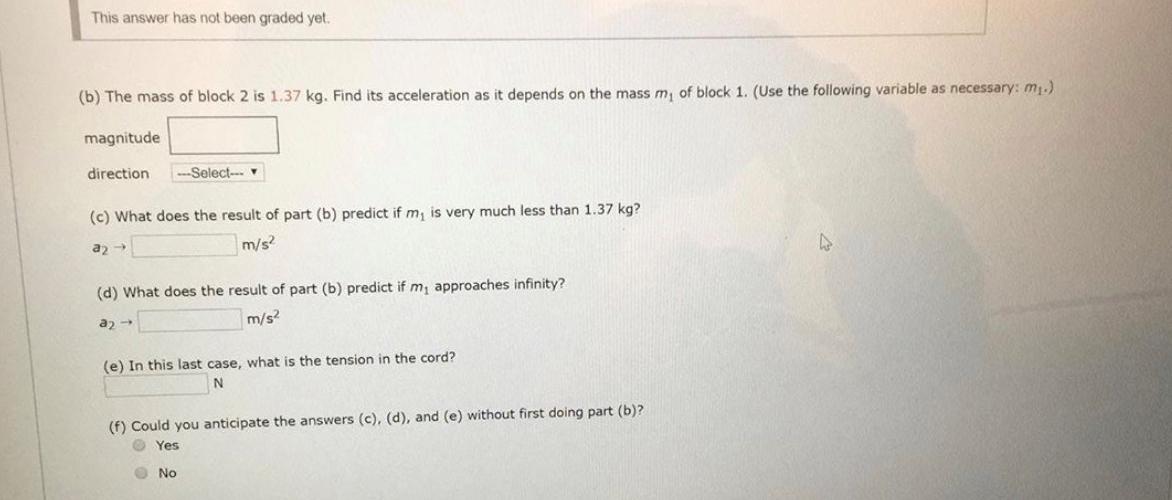Answered step by step
Verified Expert Solution
Question
1 Approved Answer
In the figure below, the pulleys and the cord are light, all surfaces are frictionless, and the cord does not stretch. Hints to approach


In the figure below, the pulleys and the cord are light, all surfaces are frictionless, and the cord does not stretch. Hints to approach this problem: Draw a free body diagram for both masses, AND the movable pulley. The movable pulley is considered to be very light, so its mass is negligible and can be considered to be zero. (a) How does the acceleration of block 1 compare with the acceleration of block 2? (Use the following as necessary: m, m, and ay.) a- 2a, Explain your reasoning. This answer has not been graded yet. (b) The mass of block 2 is 1.37 kg. Find its acceleration as it depends on the mass m, of block 1. (Use the following variable as necessary: m.) magnitude direction --Select-- (c) What does the result of part (b) predict if m, is very much less than 1.37 kg? a m/s? (d) What does the result of part (b) predict if m, approaches infinity? m/s? (e) In this last case, what is the tension in the cord? (f) Could you anticipate the answers (c), (d), and (e) without first doing part (b)? O Yes O No
Step by Step Solution
★★★★★
3.34 Rating (160 Votes )
There are 3 Steps involved in it
Step: 1

Get Instant Access to Expert-Tailored Solutions
See step-by-step solutions with expert insights and AI powered tools for academic success
Step: 2

Step: 3

Ace Your Homework with AI
Get the answers you need in no time with our AI-driven, step-by-step assistance
Get Started


